Experience the Serenity of Kongtong Mountain: Must-See Attractions and Activities
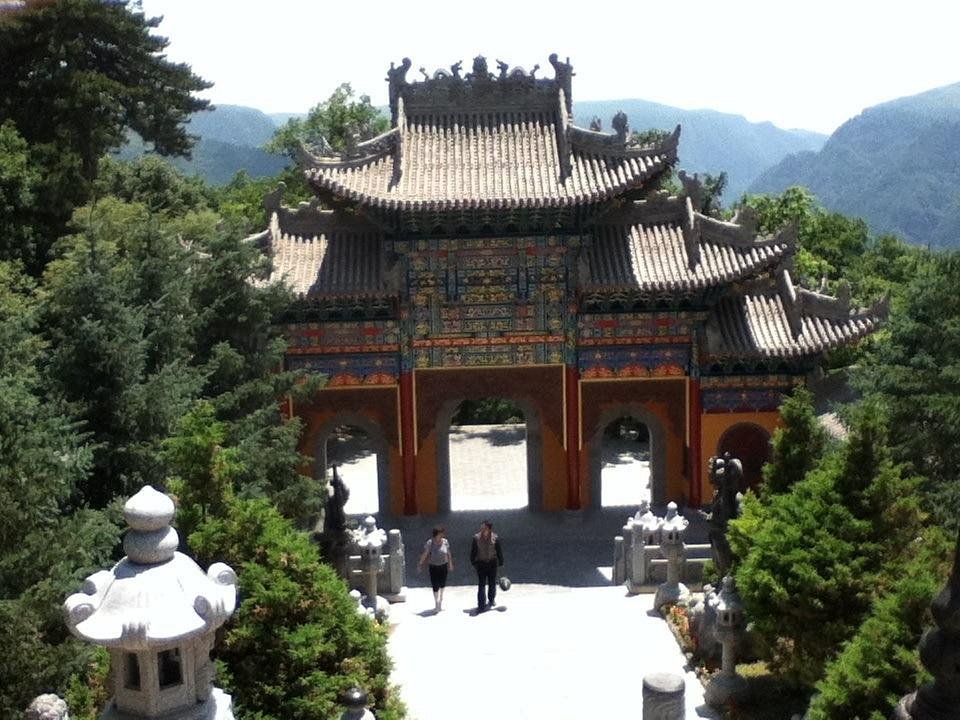
An Essential Guide to Visiting Kongtong Mountain
Nestled in the heart of Gansu Province, Kongtong Mountain (崆峒山) stands as a testament to the rich tapestry of Chinese history and spirituality. Revered as one of the sacred mountains of Daoism, it offers visitors not just breathtaking views but also a glimpse into the ancient practices and beliefs that have shaped the culture of this region for millennia. With its eight towering peaks, dotted with intricate temples and serene landscapes, Kongtong Mountain is a paradise for adventurers, spiritual seekers, and nature lovers alike.
As you ascend its rugged paths, you will encounter a harmonious blend of natural beauty and human craftsmanship, from the historic pagodas to the tranquil man-made lake that mirrors the surrounding peaks. The air is imbued with a sense of peace, inviting you to pause, reflect, and connect with the essence of Daoism, which emphasizes harmony with nature.
Whether you’re a seasoned hiker looking for a new challenge or a curious traveler eager to explore the spiritual heart of China, Kongtong Mountain beckons with open arms. This guide will equip you with all the essential information you need to make the most of your journey to this enchanting destination, ensuring that your visit is as memorable as the mountain itself. So lace up your hiking boots, prepare for an adventure, and let Kongtong Mountain reveal its secrets to you.
In This Guide
- An Essential Guide to Visiting Kongtong Mountain
- The Rich History and Legends of Kongtong Mountain
- Main Highlights: What You Absolutely Can’t Miss
- Planning Your Visit: A Practical Guide
- Tickets: Prices, Booking, and Tips
- How to Get There: A Complete Transportation Guide
- Local Cuisine and Accommodation Nearby
- Frequently Asked Questions
- Final Thoughts on Your Trip
The Rich History and Legends of Kongtong Mountain
Kongtong Mountain, nestled in the Pingliang District of China’s Gansu Province, is a site steeped in rich history and ancient legends that beckons travelers with its mystical aura. Revered as one of the sacred mountains of Daoism, Kongtong holds a significant place in Chinese culture, often regarded as a cradle of Daoist philosophy and practice.
The legacy of Kongtong Mountain dates back thousands of years, with historical records indicating that it was frequented by emperors and sages. Among its most famous visitors was the Yellow Emperor, who is said to have visited the mountain to seek wisdom from the legendary figure Guangchengzi. This pilgrimage not only solidified Kongtong’s importance in Daoism but also established its reputation as a spiritual haven where the natural world and divine wisdom intertwine.
As you explore the mountain, you’ll encounter numerous temples that pay homage to the teachings of Daoism, Buddhism, and Confucianism. The Three Religion Temple, located in the upper reaches of the mountain, stands as a testament to this harmonious blend of beliefs, inviting visitors to reflect on the shared philosophies that shape Chinese spirituality. At the summit, the Fragrant Hall Temple offers breathtaking views alongside serene spaces for contemplation, allowing one to connect deeply with the mountain’s spiritual essence.
Kongtong Mountain is characterized by its eight peaks, each presenting unique vistas and spiritual significance. Many of these peaks are dotted with ancient structures and shrines, remnants of a time when Daoist practitioners sought enlightenment amid the mountain’s tranquil beauty. The landscape is further enhanced by a man-made lake, which mirrors the towering peaks, creating mesmerizing reflections that captivate the soul.
However, the mountain’s history is not without its trials. The Cultural Revolution saw many of its original structures destroyed, yet the resilience of the local community helped give rise to new temples that echo the architectural styles of the past. This ongoing commitment to preservation and reverence for tradition is palpable as you wander the paths of Kongtong, where the stories of yesteryears whisper through the rustling leaves.
For those seeking a deeper connection, staying overnight in one of the temples offers a unique opportunity to experience daily life shaped by Daoism. Engaging with the monks and locals provides insight into the enduring practices and philosophies that continue to thrive in this sacred space.
The legends surrounding Kongtong Mountain, coupled with its breathtaking scenery and spiritual significance, make it more than just a travel destination. It is a journey into the heart of Chinese culture and a testament to the enduring power of nature and spirituality. Whether you’re climbing its rugged paths or immersing yourself in the tranquil atmosphere of its temples, Kongtong Mountain promises an experience that resonates long after you leave its ancient embrace.
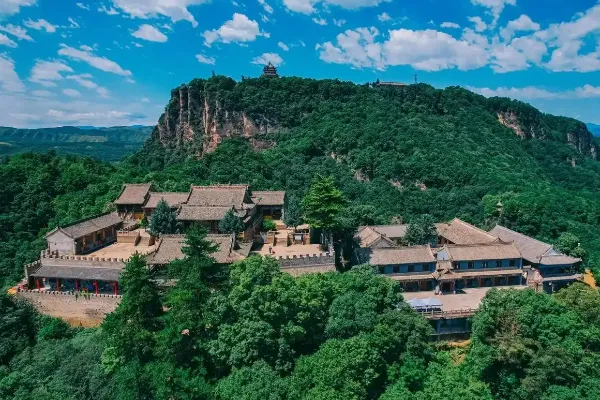
Kongtong Mountain.
Main Highlights: What You Absolutely Can’t Miss
Kongtong Mountain, a majestic peak steeped in Daoist tradition, offers visitors a breathtaking experience filled with natural beauty and cultural significance. Here are the main highlights you absolutely can’t miss during your visit:
1. The Summit and Pagoda
Reaching the summit is a rewarding endeavor, where a stunning pagoda awaits. This intriguing structure houses a geology exhibition and features multiple floors dedicated to various deities. Although English explanations may be sparse, the architecture and serene atmosphere make this a must-see location. The panoramic views from the top are enchanting, with glimpses of rivers winding through the landscape.
2. Exploring the Temples
Kongtong Mountain is home to a rich tapestry of temples, each showcasing the deep-rooted Daoist heritage. Notable among them is the Fragrant Hall Temple at the mountain’s summit, and the Three Religion Temple, which represents Buddhism, Confucianism, and Daoism. The intricate architecture and serene surroundings offer a glimpse into the spiritual practices that have flourished here for centuries.
3. The Eight Peaks
For the adventurous traveler, the eight peaks that comprise Kongtong Mountain provide various hiking opportunities. Each peak presents unique vistas and challenges, allowing you to immerse yourself fully in the mountain’s natural beauty. Be prepared for steep climbs and ensure you wear sturdy footwear to navigate the trails safely.
4. Cable Car Ride
To ease your descent or ascent, consider taking the cable car. This ride offers stunning views of the mountainous terrain and the tranquil man-made lake below. The cost is approximately 50 RMB, which also includes a shuttle bus service to and from the cable car station, making it a convenient option after a day of exploration.
5. Engage with the Local Culture
For a truly enriching experience, consider staying overnight at one of the temples. This allows you to witness the daily life of the monks and locals who inhabit the mountain. Engaging in meditation or participating in rituals can deepen your understanding of Daoism and its influence on the local community.
6. The Man-Made Lake
After a day of hiking and exploration, take a moment to relax by the picturesque man-made lake. The serene waters reflect the surrounding peaks and temples, providing an ideal spot for reflection and enjoying the tranquil ambiance of Kongtong Mountain.
7. Scenic Views and Natural Beauty
Throughout your journey, be prepared for stunning landscapes reminiscent of classic Chinese landscape paintings. The lush greenery, rocky formations, and spiritual architecture create a mesmerizing backdrop that is perfect for photography enthusiasts.
Essential Tips:
- Footwear: Wear comfortable and sturdy shoes, as the trails can be steep and uneven.
- Weather Awareness: The mountain’s weather can change rapidly; check forecasts and dress in layers to stay comfortable.
- Visit During Off-Peak Times: For a quieter experience, try to visit on weekdays or outside of public holidays to avoid crowds.
Kongtong Mountain is not just a destination; it’s an immersive experience that combines breathtaking nature with profound spirituality. Be sure to carve out enough time to explore all its wonders and embrace the tranquility that this sacred place offers.
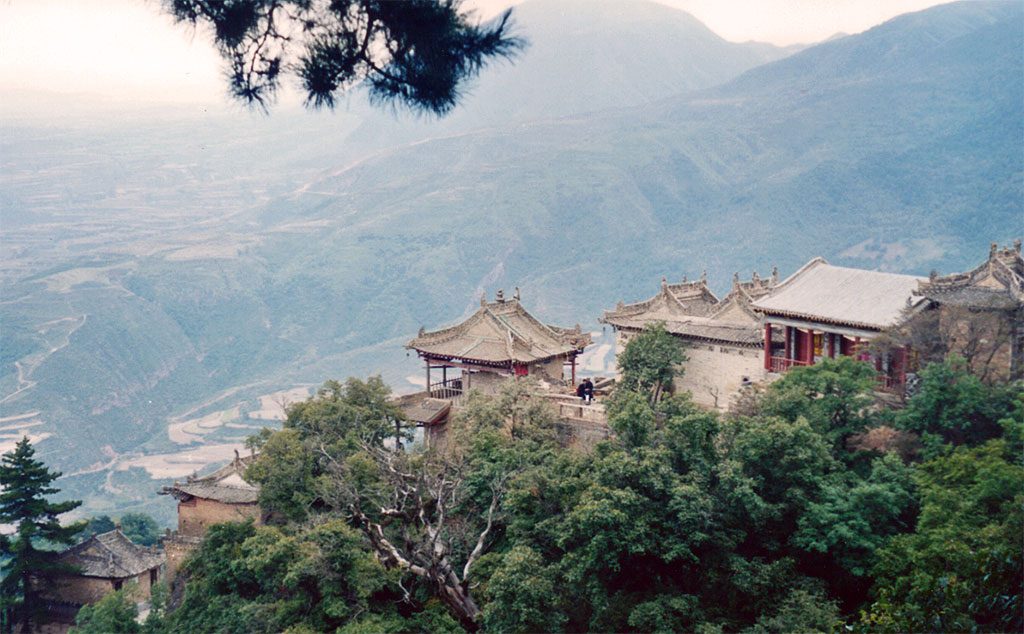
Kongtong Mountain.
Planning Your Visit: A Practical Guide
Kongtong Mountain, known as 崆峒山 in Chinese, is a captivating destination nestled in the Pingliang region of China. With its rich Daoist heritage, stunning natural landscapes, and array of temples, it offers a unique experience for international travelers seeking adventure and spiritual insight. Here’s how to plan your visit effectively:
Getting There
Location: Kongtong Mountain is located approximately 12 kilometers west of Pingliang city, in Gansu Province.
Transport Options:
– By Air: The nearest airport is in Lanzhou, about 200 km away. From there, you can take a train or a bus to Pingliang.
– By Train: Pingliang is accessible by train from major cities. Once in Pingliang, you can take a local bus or taxi to the mountain entrance.
– By Bus: Frequent buses run from Pingliang to Kongtong Mountain, making it easy to reach.
Best Time to Visit
The ideal time to explore Kongtong Mountain is during the spring (April to June) and autumn (September to November) months, when the weather is mild and the scenery is stunning. Summers can be hot, while winters can bring snowfall, sometimes affecting accessibility.
Entrance Fees and Hours
- Entrance Fee: The entrance fee to the mountain is generally around 50 RMB. There is also a cable car service that costs approximately 50 RMB one way, which includes a shuttle bus to the parking area.
- Operating Hours: Kongtong Mountain is open daily from 8:00 AM to 5:00 PM. It’s advisable to arrive early to fully enjoy the sights and avoid crowds.
What to Expect
Hiking and Exploration:
– Trails: Prepare for a variety of hiking trails, some of which can be steep and require a good level of fitness. Wear sturdy shoes and be ready for plenty of steps.
– Temples: Discover the rich Daoist culture through numerous temples, including the Fragrant Hall Temple at the summit and the Three Religion Temple, which encompasses Buddhism, Confucianism, and Daoism.
Cultural Experience:
– Take the opportunity to engage with the local Daoist community. Some visitors recommend staying in one of the temples to experience the daily life and the spiritual practices of the monks.
Scenic Views:
– From the summit, you can enjoy breathtaking views of the surrounding landscape, including glimpses of the river below. Don’t forget your camera, especially if the weather is clear.
Tips for Your Visit
- Weather Considerations: Weather can be unpredictable, with clouds potentially obscuring views. Check the forecast before your visit, and consider a clear day for optimal visibility.
- Stay Hydrated: Bring water and snacks, as facilities may be limited on the trails.
- Respect Local Customs: As a site of spiritual significance, maintain a respectful demeanor, especially in and around the temples.
Nearby Attractions
While in the area, consider visiting:
– Kongtong Reservoir: A scenic spot perfect for relaxation and contemplation.
– Xiangshan Mountain Scenic Spot: Not far from Kongtong, this area offers additional hiking opportunities and geological formations to explore.
Conclusion
Kongtong Mountain is not just a destination; it’s a journey into the heart of Daoist tradition and natural beauty. By planning ahead and being prepared, you can ensure that your visit is both enjoyable and enriching. Whether you’re hiking its trails, exploring ancient temples, or simply soaking in the stunning views, Kongtong Mountain promises an unforgettable experience.

Kongtong Mountain.
Tickets: Prices, Booking, and Tips
When planning your visit to Kongtong Mountain, it’s essential to know the ticket prices, booking options, and a few handy tips to enhance your experience. Here’s everything you need to navigate your journey:
Ticket Prices
-
Entrance Fee: The general admission to Kongtong Mountain is approximately 50 RMB (around $7 USD). This ticket grants you access to the stunning views and various temples scattered throughout the mountain.
-
Cable Car: For those who prefer a more leisurely descent or want to enjoy breathtaking views, the cable car ride down costs an additional 50 RMB. This fee includes a mini-bus transfer from the cable car station to the parking area at the base, making your exit smooth and convenient.
Booking Information
-
Purchase on Site: Tickets can be easily purchased at the entrance of Kongtong Mountain. There is no need for advance booking, making it flexible for spontaneous visits.
-
Best Times to Visit: To avoid crowds and fully appreciate the serene environment, consider visiting on weekdays rather than weekends or holidays. Early morning is also a great time to explore, as the weather is often cooler and the views clearer.
Tips for Your Visit
-
Wear Comfortable Footwear: The terrain can be steep and uneven, with many steps throughout the area. Sturdy shoes are a must to ensure a safe and enjoyable hike.
-
Check the Weather: Given that weather conditions can greatly impact your experience, it is advisable to check the forecast before your visit. Clear days will offer stunning views from the summit, while cloudy days may limit visibility.
-
Explore the Temples: Don’t miss out on visiting the various temples along the trails, including the notable Three Religion Temple which represents Buddhism, Confucianism, and Daoism. Each temple provides a unique insight into the rich cultural tapestry of the area.
-
Consider Staying Overnight: For a truly immersive experience, consider spending a night in one of the temples. This allows you to appreciate the tranquil surroundings and learn more about Daoist practices from the local community.
With these details in hand, you’re ready to embark on an unforgettable journey to Kongtong Mountain, where stunning landscapes and rich history await!
How to Get There: A Complete Transportation Guide
Getting to Kongtong Mountain (崆峒山) is an adventure in itself, as it combines the beauty of China’s countryside with a touch of local culture. Situated about 12 kilometers west of Pingliang in Gansu Province, this sacred mountain offers a unique blend of natural beauty and spiritual significance. Here’s your complete guide to navigating the journey to this magnificent destination.
By Air
The closest major airport to Kongtong Mountain is Lanzhou Zhongchuan International Airport (LHW), which is approximately 200 kilometers away. This airport connects to various domestic and international cities. From the airport, you have a couple of options:
-
Private Transfer: The most convenient way is to arrange a private car or shuttle service to take you directly to Kongtong Mountain. This ensures a comfortable journey, especially if you are traveling with luggage.
-
Public Transport: Take a shuttle bus from the airport to Lanzhou city center. From there, you can catch a long-distance bus to Pingliang, which takes about 3 to 4 hours.
By Train
If you prefer train travel, you can take a train to Pingliang Railway Station. Pingliang is well-connected by rail to several major cities, including Lanzhou and Xi’an. Upon arrival at Pingliang, you can proceed as follows:
-
Taxi: The most straightforward option is to take a taxi from the train station directly to Kongtong Mountain. The drive should take about 20-30 minutes.
-
Local Bus: Alternatively, you can take a local bus to Kongtong District. Buses frequently run from the Pingliang bus station to the mountain area.
By Long-Distance Bus
For budget travelers, taking a long-distance bus to Pingliang is a viable option. Buses depart from various cities, including Lanzhou and Xi’an. Once you arrive at the Pingliang bus station, follow the same taxi or bus options to reach the mountain.
Local Transportation
Once in Pingliang, navigating to Kongtong Mountain is fairly straightforward:
- Taxis: Readily available and a quick way to reach the mountain base.
- Public Buses: Check the local bus schedule, as they may offer direct routes to the mountain entrance.
Cable Car to the Summit
For a breathtaking view and a less strenuous ascent, consider taking the cable car from the base of Kongtong Mountain to the summit. The cable car ride costs around 50 RMB and includes a mini-bus transfer back to the parking area once you descend. Be aware that the cable car may close during inclement weather, so check ahead.
Travel Tips
- Best Time to Visit: The ideal time to visit Kongtong Mountain is during the spring and autumn months when the weather is mild and the scenery is at its most beautiful.
- Footwear: Wear sturdy shoes, as the trails can be steep and uneven.
- Plan Your Visit: If possible, avoid weekends and public holidays to escape the crowds and fully enjoy the tranquility of the mountain.
With this transportation guide, you’re all set to embark on your journey to Kongtong Mountain, where nature, history, and spirituality intertwine to create a truly unforgettable experience. Safe travels!
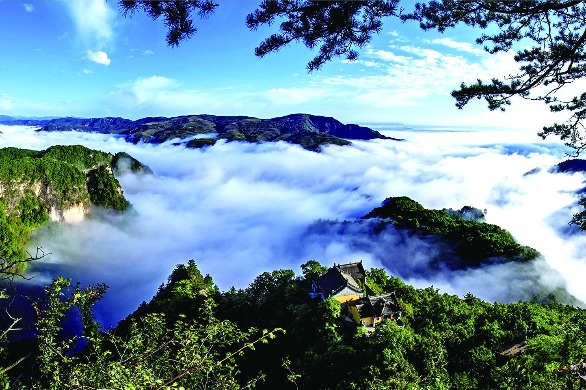
Kongtong Mountain.
Local Cuisine and Accommodation Nearby
When visiting the breathtaking Kongtong Mountain, the experience extends beyond its stunning peaks and ancient temples to include a delightful culinary journey and comfortable accommodations. Here’s what you can enjoy in the vicinity:
Local Cuisine
-
Pingliang Local Delicacies: The nearby city of Pingliang is known for its unique flavors. Be sure to try Pingliang Lamb Hotpot, a warming dish perfect for sharing, featuring tender lamb cooked in a fragrant broth. Pair it with local vegetables for a hearty meal.
-
Kongtong Mountain Snacks: As you explore the mountain, keep an eye out for local vendors offering snacks like spicy roasted chestnuts and sweets made from glutinous rice. These treats are perfect for refueling during your hike.
-
Three Religion Temple Restaurant: Located near the famous Three Religion Temple, this eatery serves a mix of Buddhist vegetarian dishes and local specialties. Try their stir-fried seasonal greens and tofu dishes, which are both flavorful and wholesome.
-
Street Food Stalls: Back in Pingliang, walk through the bustling streets to discover various food stalls. Look for scallion pancakes and fried dumplings that are crispy on the outside and juicy on the inside – a satisfying treat after a long day of exploration.
Accommodation Options
-
Purple Heaven Temple: For a truly immersive experience, consider staying at the Purple Heaven Temple. This unique option allows you to sleep within the serene environment of the mountain. Guests can participate in daily rituals and enjoy vegetarian meals prepared by the resident monks, providing a glimpse into the Daoist way of life.
-
Kongtong Mountain Hotel: Situated at the foot of the mountain, this hotel offers comfortable rooms with stunning views. It’s an ideal base for those looking to explore the area, featuring modern amenities and a restaurant serving local cuisine.
-
Pingliang Huafeng Hotel: A short drive from Kongtong Mountain, this hotel offers a blend of comfort and convenience. With spacious rooms and a restaurant that serves both Eastern and Western dishes, it’s perfect for families and international travelers.
-
Backpacker Hostels: For budget-conscious travelers, several hostels in Pingliang offer dormitory-style accommodations. These are great for meeting fellow adventurers and are typically located near local markets and eateries.
Final Tips
As you wander through the majestic landscapes of Kongtong Mountain, don’t forget to indulge in the local flavors and consider a stay that enhances your experience of this culturally rich area. Whether you’re enjoying a hotpot meal or meditating in a temple, the essence of Kongtong will surely linger long after your visit.
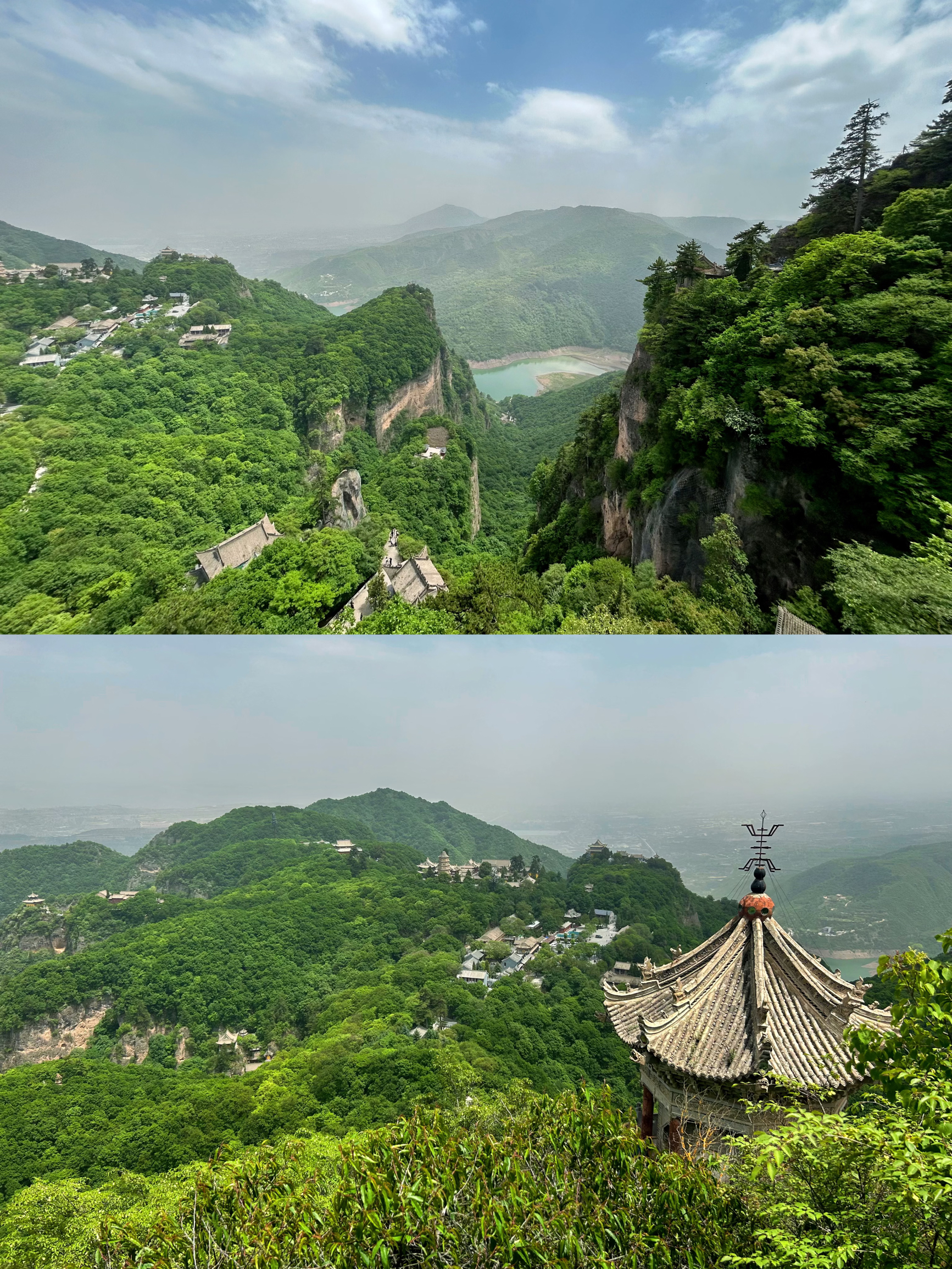
Kongtong Mountain.
Frequently Asked Questions
Frequently Asked Questions for Travelers to Kongtong Mountain
-
What is the best time to visit Kongtong Mountain?
The ideal time to visit Kongtong Mountain is during the spring (April to June) and autumn (September to November) when the weather is mild, and the scenery is at its most beautiful. Avoid peak summer months to escape the heat and winter when paths may be icy. -
How do I get to Kongtong Mountain from Pingliang?
Kongtong Mountain is approximately 12 kilometers west of Pingliang. You can take a taxi or a local bus from Pingliang city center to reach the mountain’s entrance. The journey typically takes around 20-30 minutes. -
Are there entrance fees or additional costs involved?
Yes, there is an entrance fee to access Kongtong Mountain, which varies depending on the season. Additionally, if you choose to take the cable car to the summit, the cost is around 50 RMB, which includes a mini bus ride back to the parking area. -
What should I wear and bring for a day hike?
Comfortable, sturdy footwear is essential due to the numerous steps and rocky paths. Dress in layers to accommodate changing temperatures, and don’t forget to bring water, snacks, sunscreen, and a camera to capture the stunning views. -
Is it possible to stay overnight on the mountain?
Yes! Staying at one of the temples, such as the Purple Heaven Temple, allows you to immerse yourself in the local Daoist culture. Reservations are recommended, especially during peak travel seasons. -
Are there English-speaking guides available?
While some local guides may speak English, it’s advisable to hire a guide in advance if you require assistance in English. Alternatively, consider downloading translation apps or bringing a phrasebook to help with communication. -
What are the must-see attractions on Kongtong Mountain?
Key highlights include the Fragrant Hall Temple at the summit, the Three Religion Temple (representing Buddhism, Confucianism, and Daoism), and the scenic views from the various peaks. Don’t miss the geology exhibitions in the pagoda at the top! -
What if the weather is bad on my planned visit day?
Weather can be unpredictable, so it’s wise to check forecasts ahead of your visit. If it’s cloudy or rainy, consider postponing your trip to enjoy the full beauty of the mountain. If you still go, be cautious on wet paths and ensure you have appropriate gear to stay dry.
Final Thoughts on Your Trip
As you reflect on your journey to Kongtong Mountain, let the memories of its breathtaking landscapes and rich cultural heritage resonate within you. Nestled in the heart of China, this sacred site offers travelers not just stunning views, but a glimpse into the profound spirituality of Daoism, where ancient traditions harmoniously intertwine with nature.
Whether you found solace in the serene temples, marveled at the intricate architecture, or challenged yourself with the invigorating trails, each step on Kongtong Mountain is a step into history. The warmth of the local community, their dedication to preserving the mountain’s legacy, and the tranquil atmosphere invite you to pause, breathe, and reconnect with yourself and the world around you.
While the weather may have posed challenges during your visit, remember that every cloud has its silver lining. The mystique of the mountain, shrouded in mist, adds to its allure—an invitation to embrace the unexpected. As you return home, carry with you the spirit of Kongtong Mountain, a reminder of nature’s beauty and the timeless wisdom of the Daoist philosophy it embodies.
May your adventures continue to inspire you, and may you seek out the wonders of the world with the same curiosity and reverence you experienced in this enchanting corner of China.